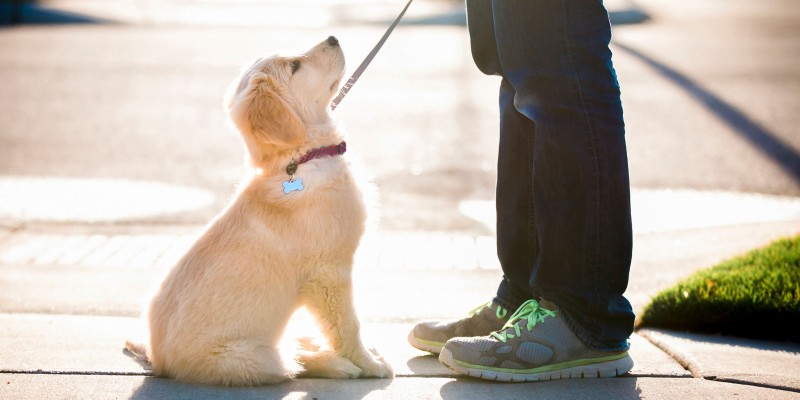Puppy Training Techniques: Teaching Basic Commands for a Happy Pet
Puppy Training Techniques: Teaching Basic Commands for a Happy Pet
Blog Article
Leading Pup Educating Techniques to Ensure a Well-Behaved Family Pet
Effective pup training is vital for cultivating a mannerly buddy, and various strategies can considerably affect a canine's development. As we explore these methods further, it becomes clear that the success of puppy training hinges on a combination of strategies that can change your animal's habits in impressive ways.
Positive Reinforcement Strategies
Making use of positive reinforcement methods is necessary for reliable puppy training, as it motivates desired habits via rewards as opposed to penalty. This method takes advantage of the natural discovering procedures of canines, reinforcing good behavior by giving concrete and immediate benefits, such as deals with, appreciation, or playtime. By associating favorable results with particular actions, puppies are a lot more most likely to duplicate those habits in the future.
Reliable favorable reinforcement involves timing and consistency. Benefits must be offered immediately after the desired behavior occurs to produce a clear connection in the puppy's mind. Additionally, differing the kinds of incentives can keep a young puppy's interest and motivation throughout the training procedure. For example, some puppies might react much better to spoken praise while others may favor a favorite plaything or reward.

Consistency in Training Commands
Keeping uniformity in training commands is essential for strengthening the lessons found out through positive reinforcement methods. Pets grow on routine and predictability, so utilizing the very same spoken commands and hand signals for specific behaviors is crucial. This uniformity helps puppies recognize what is expected of them, decreasing complication and frustration for both the animal and the trainer.

Timing additionally plays a substantial function in uniformity. Commands must be provided promptly throughout training sessions and complied with promptly by positive support, such as deals with or praise. This instant feedback helps solidify the organization between the command and the preferred actions.
Including consistency into training sessions will certainly produce a stable learning atmosphere, promoting quicker proficiency of commands. Ultimately, a well-structured strategy promotes a solid bond between the pup and its owner, bring about a much more loyal and well-behaved pet dog.
Socialization With Other Pet Dogs
Socialization with various other pets is crucial for a pup's advancement, as it assists them discover ideal behaviors and interaction abilities in diverse social contexts. Early communications with different pets can considerably affect a pup's temperament and versatility in numerous situations. When young puppies are revealed to a variety of family pets, they come to be much more positive and much less fearful, which can avoid potential behavioral problems later on in life.

Show your young puppy to recognize signals from other animals, such as indicators of playfulness or discomfort, promoting mutual respect and understanding. Normal socializing not only boosts your puppy's social abilities but additionally contributes to their total well-being, developing a more unified living environment.
Dog Crate Training Advantages
Identifying the various benefits of dog crate training can substantially enhance both the young puppy's and proprietor's experience. Crate training gives a risk-free and safe and secure setting for puppies, guaranteeing they feel secured when laid off. This complacency can significantly decrease anxiousness and stress important link levels for both the owner and the animal.
In addition, crates work as a useful house-training tool. Puppies normally stay clear of soiling their sleeping area, consequently encouraging them to hold their bladder till they are allow outside. This impulse can accelerate the house-training procedure, fostering great behaviors early on.
Crate training likewise helps in handling a young puppy's actions when not being watched. By giving a marked room, owners can stop destructive actions, such as eating on furnishings or obtaining right into unsafe materials. Cages can be advantageous during travel, supplying an acquainted area that can help soothe a puppy in new atmospheres.
Finally, developing a cage routine encourages independence, enabling pups to discover exactly how to be alone without fear. Overall, dog crate training is an efficient method for promoting self-control, serenity, and safety and security, resulting in a well-adjusted, well-behaved animal.
Chain Training Essentials
Leash training is a basic aspect of liable pet ownership that makes sure a safe and delightful walking experience for both the pup and its proprietor. Proper leash training starts early, ideally during the pup's socialization period. This training assists establish great behaviors and promotes favorable actions when like this out in public.
To begin, choose a comfy collar or harness that fits your pup well. Connect a strong chain, guaranteeing it is not also long, as this can result in drawing and erratic behavior. Beginning in a peaceful atmosphere to decrease interruptions and progressively present your puppy to new surroundings.
Usage positive reinforcement methods, such as treats and praise, to encourage your young puppy to walk beside you. If your pup pulls, quit walking and wait for them to return to your side before continuing.
Additionally, include short training sessions with enjoyable diversions to develop your puppy's focus. With commitment and persistence, chain training will certainly cause an accommodating friend, making strolls pleasurable for both the young puppy and the owner.
Verdict
In conclusion, utilizing efficient pup training techniques is important for developing a well-behaved pet dog. In general, these approaches collectively advertise an unified relationship in between pups and their owners.
As we check out these approaches even more, it comes to be clear that the success of puppy training hinges on a mix of approaches that can transform your family pet's actions in remarkable methods.
Using favorable support techniques is vital for reliable pup training, as it encourages preferred habits via benefits instead than penalty.Crate training also aids linked here in handling a young puppy's actions when unsupervised.Leash training is an essential element of responsible family pet possession that makes certain a risk-free and delightful walking experience for both the puppy and its owner.In verdict, utilizing effective puppy training techniques is important for creating a mannerly animal.
Report this page